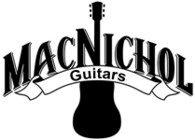We ship free of charge via the US Post Office to United States addresses. Orders are shipped within two business days and typically take 3 to 7 business days for delivery.
If you are not fully satisfied with your purchase for any reason, please let us know within 30 days of receipt. We will either provide a free replacement or full refund at our discretion. Expedited shipping charges are non-refundable unless the carrier guarantees a specified delivery date that is not met and the carrier offers a refund in such instance.
For international shipping, please check with your country’s regulations on importing cow bone before purchasing. We only ship internationally via eBay’s Global Shipping Program. Please see the following link for details – eBay Global Shipping. To purchase, go to the listing for the item you’re interested in on eBay, then go to the Shipping and payments tab on ebay below the item picture. Select your country and then click the Get Rates button. This will list the shipping cost and estimated delivery date.
Yes, please fill out our Contact Form and let us know your guitar’s year/brand/model, your current saddle’s length, maximum height, bass to treble edge height difference, thickness, top radius, and compensation pattern, as well as bridge saddle slot length and thickness, and string spacing at the bridge. From this information we can let you know whether we might have a saddle that would fit, or can refer you to another source. If your guitar is missing the saddle, we advise taking it to a professional guitar technician.
Each guitar will have a slightly different neck angle, and so although the factory might set the twelfth fret action at a specified height, this can be achieved through a combination of adjusting the neck relief, nut slot height, or saddle height.
Not necessarily as it depends on each individual guitar and guitarist’s preferences. Please see our blog article Is a Tusq Saddle Better than Bone? for more information.
Rather than being just a straight piece of material, many steel string saddles are compensated to adjust for different string radii and scale lengths. Please see our blog article Acoustic Guitar Saddle Compensation Patterns for more information.
Saddles are not flat on top, but instead have a subtle curvature to match the fretboard’s curvature. Common acoustic guitar fretboard radii are 12, 14, 15, or 16 inches.
No, there are a large number of sizes available making finding the correct size for your guitar difficult. Additionally, you must consider not only the length, height, thickness of your saddle, but also compensation pattern and radius. Please see our article, Are All Acoustic Guitar Saddles the Same Size? for more information.
Unbleached bone is a slightly harder material and is a bit more difficult to work with, but many people prefer the tone. Unbleached bone does have inconsistent color, though. Please see the bottom half of our article What Are Bone Saddles? for more information.
Quality bone guitar saddles cost around $20 to $30. You might find bone saddles for a much lower price, but the bone may have been processed with harsh chemicals, which speeds up production time, but produces weak, chalklike bone that produces poor tone and does not last.
You should replace your guitar saddle if it breaks, or has string gouges so deep that your action is lowered and produces buzzing. You might also want to replace your saddle to produce a different tone.
Guitar saddle slots are slanted to improve intonation. Thicker gauge strings require a longer scale length than thinner strings do.
Compensated guitar saddles can improve intonation, but more compensation does not mean improved intonation as guitar builders will factor in saddle angle as well. You should typically use the same saddle compensation pattern used from the factory unless you have intonation problems.
You should cut a bone saddle to fit your bridge slot with 100 grit sandpaper. You may need to adjust length, height, or thickness. Please see our video for more information.
A drop-in saddle does not need to be glued to the bridge, but may still require adjustment to the length, thickness, maximum height, and bass to treble edge height different to fit the bridge saddle slot and for individual preferences. Through saddles are often glued in place.
Many acoustic guitarists prefer the tone of a bone saddle to that of other materials, particularly plastic. However, bone does not produce a universally better tone as each player will have different preferences.
Acoustic guitar saddles should not have notches, which will pinch the strings at the side and result in a subtly muted tone. String pressure is sufficient to keep strings in place at the saddle. Although your current saddle might have notches, these either happened because the strings slowly dug the notches, or someone incorrectly cut notches to lower action. If your current saddle has notches we advise replacing it.
Most acoustic guitar saddles should not be glued in place, although some saddles will be glued in. If your saddle goes all the way through the bridge, then it is a through saddle and these are often glued in place. We advise having a professional guitar technician work on through saddles.
No. Guitar builders factor in saddle angle, scale length, string spacing, string gauge, and other aspects to determine saddle compensation pattern, which may be no compensation. Replacing a non-compensated saddle with a compensated saddle could have a negative impact on your intonation, particularly if your string spacing does not match the saddle compensation pattern. See our Guide to Non-Compensated Saddles for more information.
Below are answers to common questions. Still have a question? Please contact us. We will respond within 48 hours.
